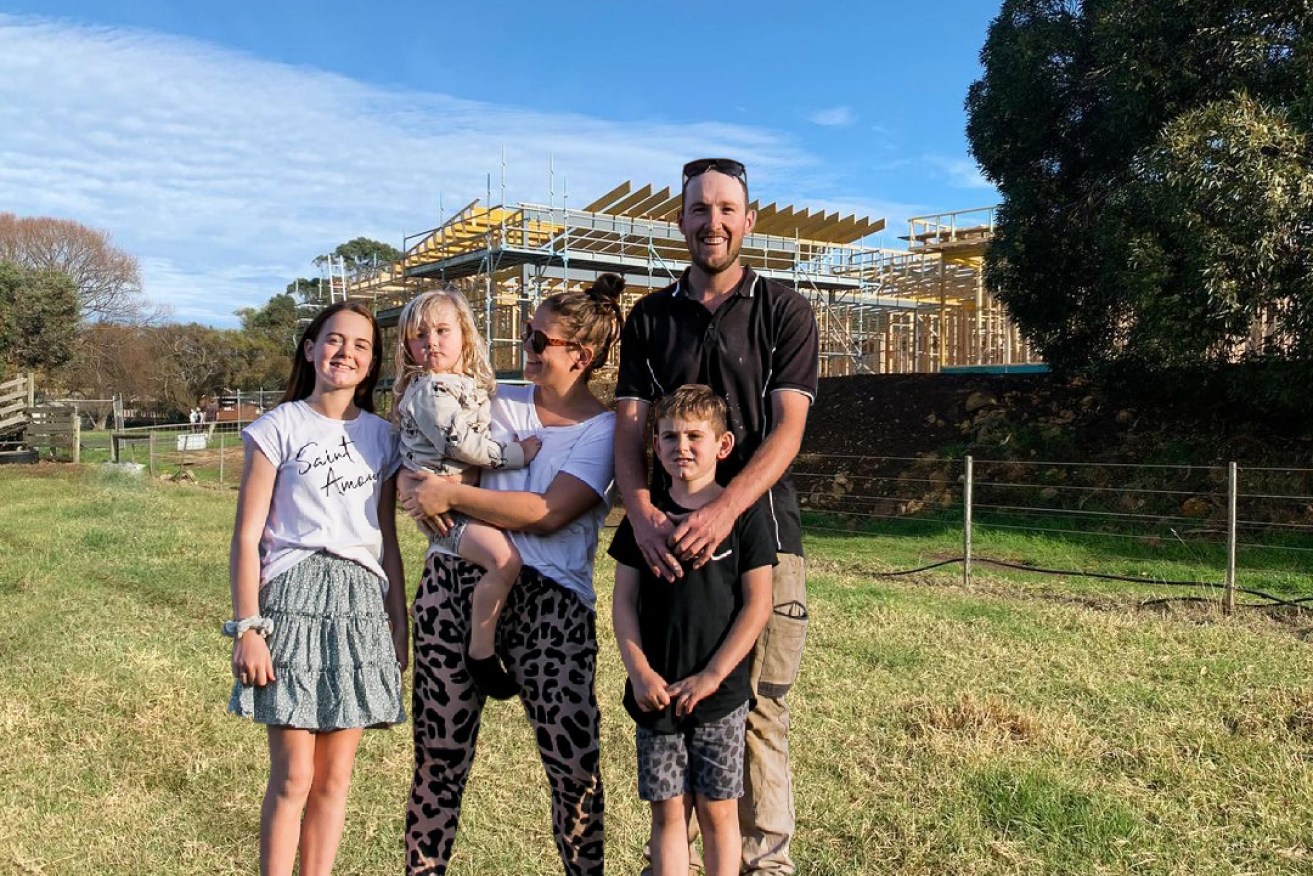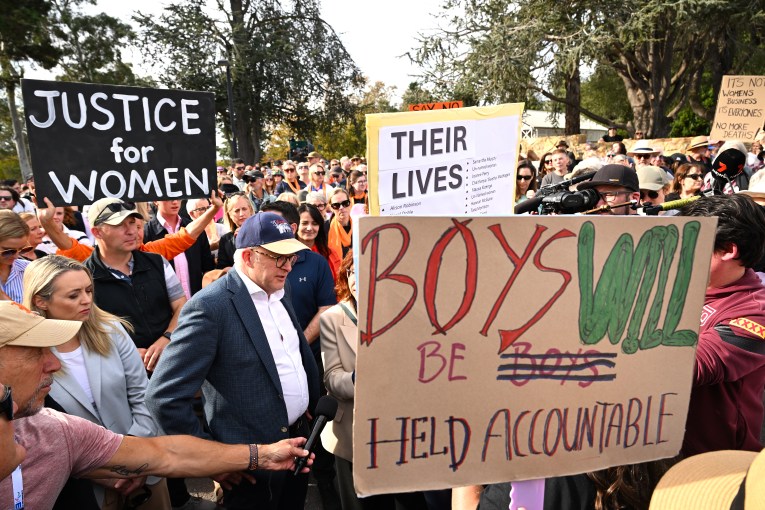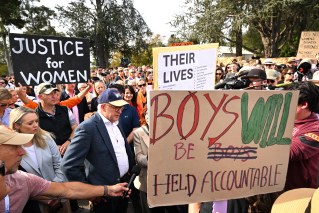‘Perfect storm’: Why delays and price hikes are plaguing home builders


Material and trades shortages delayed construction of the Lockes' forever home by months. Instagram: @our_forever_on_wollaston
In 2019, Hayley Locke and her husband Jayden began building their forever home in Warrnambool on Victoria’s south-west coast.
Ms Locke never imagined that more than two years later they would still be living in a small, three-bedroom rental with three kids during lockdown, while waiting for their dream home to be finished.
The Lockes are among more than 100,000 home owners reeling from long delays and record-high prices as Australia endures its worst building supply shortage in more than 40 years.
Ms Locke said the past nine months had been “a huge struggle”.
“I’m homeschooling two children, with a preschooler at home, all while trying to work from home in a house that wasn’t big enough for us to begin with,” she said.
“With supply issues, at this stage we don’t see ourselves finishing the build this year.”
The Lockes spent months on a waiting list for timber framing after their delivery date was pushed back three times.
Imported window frames from Europe cost nearly twice their original price.

Pandemic trade bottlenecks and a global construction boom left the Lockes way over budget and months behind schedule.
Industry leaders have blamed “a perfect storm” for the rocketing prices and materials shortage.
The pandemic’s effect on international supply chains and a global shortage of shipping containers has made importing materials extremely slow and expensive.
The Black Summer bushfires also wiped out 3 per cent of New South Wales’ plantation timber.
On top of that, Australians have started construction on a record number of houses in 2021.
Housing Industry Association chief economist Tim Reardon said coronavirus restrictions and the federal government’s HomeBuilder grants had contributed to a spike in new houses being built.
“Globally, we’ve seen a shift towards lower-density housing,” Mr Reardon said.
“Work-from-home arrangements, moving to regional areas, sea changes, tree changes, retirees, have all had an impact.”
This coincided with the Morrison government’s HomeBuilder program, which gave up to $25,000 to eligible home builders and received more than 121,000 applications.
Since 2004, an average of 108,000 houses have begun construction across Australia each year, peaking at 119,000 in 2018, according to HIA figures. For 2021, that figure will be more than 143,000 – up 20 per cent on 2018 and a 32 per cent increase on the 17-year average.
The record demand has led to a shortage in materials and trades, causing massive delays and price increases.
"Typically, a home would be completed within seven to nine months," Mr Reardon said.
"That figure's looking much closer to 12 months at the moment."
Construction material costs have also had their biggest quarterly rise since the 2008 global financial crisis, according to the Australian Bureau of Statistics.
Despite an increase in domestic production, structural timber had the biggest price increase at 6.6 per cent, followed closely by plumbing, steel and electrical products.
A $15 million cash injection from the federal government is expected to bring some relief to timber prices and delays in the months to come.
Yet some builders and home owners are still paying much more for materials than official data might indicate.
First-time home owners Eloise Hill and Jacob Dobson have had their construction set back more than two months because of price hikes.
Back in March, the young couple signed a contract with a small, family-owned builder to build their home at Doreen in Melbourne's north, making the deadline for the HomeBuilder grant by just a few hours.
In early September, with construction poised to start, their supplier notified Ms Hill the timber had arrived.
But when rain delayed pouring their concrete slab by a few days, the timber was sold to a bigger builder for a higher price – setting back their construction by 10 weeks.
"It's just a money business at the minute," Ms Hill said.
"That will be 10 weeks longer that we're going to have to pay rent. That's six, seven grand extra that could be paying off our own mortgage."
It's not just an issue for home buyers.
Charles Crook, the director of small Victorian building company EngDev, said he has stopped quoting for new jobs because of the material shortage.
"You don't know whether or not you can get the supply, and then the client doesn't want to use you anyway because you're too expensive. So you just kind of figure, ‘Stuff it, I just won't bother costing anything’," Mr Crook said.
"The whole thing's a real headache."
Mr Crook has turned to steel and structural insulated panels instead of timber frames to minimise cost blowouts and delays. But even they are feeling the supply pinch as more and more builders do the same.
HIA's Mr Reardon said more Australian homes will be constructed from steel frames this year than ever before.
Steel frames are made in Australia, meaning they are less vulnerable to international supply chain disruptions, but framing supplies would still fall "well short of the volume needed to meet demand", he said.
Yet there is hope ahead.
Mr Reardon said that as the number of new constructions returns to pre-pandemic levels and international supply fills the market, prices should return to normal – or else there might be increased investment in Australian timber plantations.








